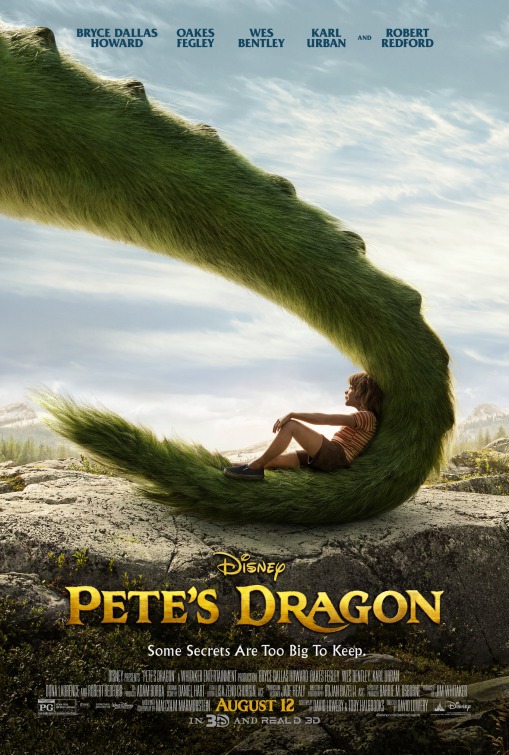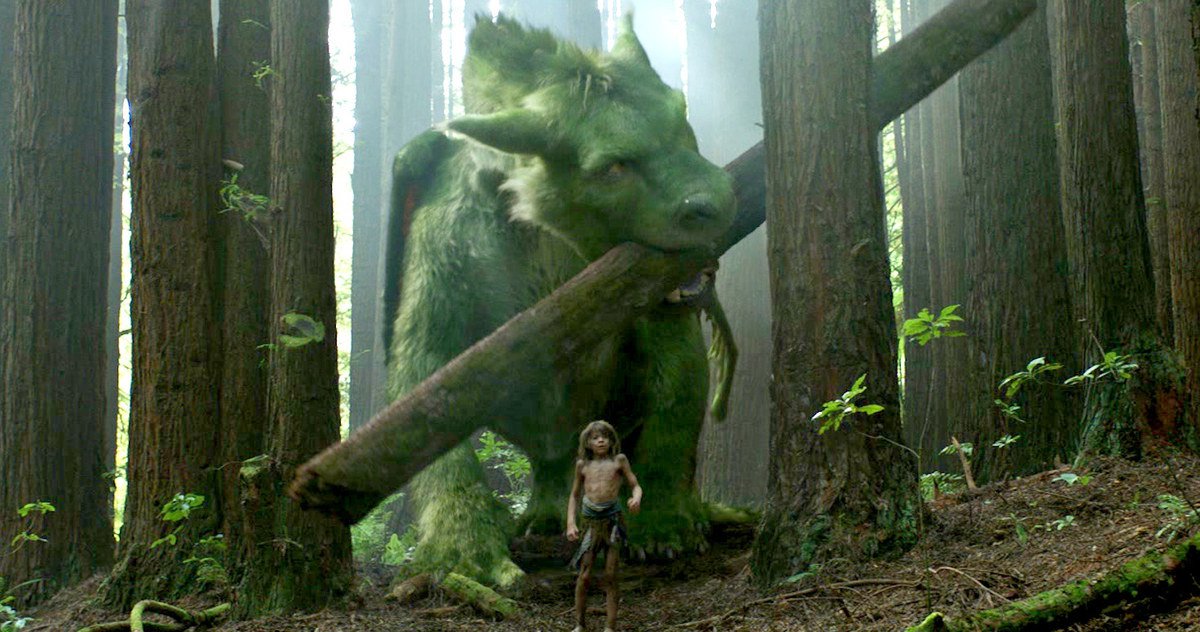By Chris Feil
 It's at the outset of David Lowery's reinvention of Pete's Dragon that the titular beast is intended more as a puppy to our namesake hero. What follows is a sharp left turn from the original's vaudevillian slapstick, with the "boy and his dog" approach used as a distinguishing characteristic from the aimless original and as an easy emotional access point for the audience. Gone are the musical numbers (though the hipster rock is cranked up to 11) and the buffoonery in favor of something more genuinely wraught straight from the heart.
It's at the outset of David Lowery's reinvention of Pete's Dragon that the titular beast is intended more as a puppy to our namesake hero. What follows is a sharp left turn from the original's vaudevillian slapstick, with the "boy and his dog" approach used as a distinguishing characteristic from the aimless original and as an easy emotional access point for the audience. Gone are the musical numbers (though the hipster rock is cranked up to 11) and the buffoonery in favor of something more genuinely wraught straight from the heart.
But more importantly, this iteration of Elliott the dragon serves to stir more than just cutesy, cheap surrogate affection. Lowery is unafraid of scaring the kids and making the grown ups weep along the way. What remains is a family film about coping defenses, especially how we lean on our furry friends in the face of trauma.
This nuanced angle is made plain in the film's stunning prologue, confidently announcing those stark differences from its source and the emotional rollercoaster to come. The film is fascinated by moments of magic in the real world, and luckily Lowery has conjured a film that does just that, from Elliott's reveal to the organic emotions it creates. Yep, we finally have some magic at the movies this summer.

Lowery is another in a growing list of emerging directors making the massive leap from small scale independents to tentpole studio productions, and by my estimation one of the most successful after this film. While this may be more accessible and less elegiac than his remote romance Ain't Them Bodies Saints, he does continue to show strength at maintaining a simmering emotional undercurrent as he did with Saints. Unlike some of his contemporaries, this feels very much like the same voice but with more tools available to play with. Lowery finds a smart balance between larger scale and intimacy to tell this small story with huge feeling. Stranger Things may be bringing the Spielberg/Amblin aesthetic back in vogue for the umpteenth time, but here's a filmmaker actually working those muscles without blandly aping its predecessors.
The film's visual showmanship may not be matched by narrative inventiveness, but its expected story beats are kept at a brisk pace without feeling overly mechanical. The energy lags behind whenever it takes momentary focus on the adults, particularly Karl Urban's never too convincing villain. Robert Redford generates some sentimentality in underlining the film's magical thesis and little else. Bryce Dallas Howard and Wes Bentley are slightly more clearly drawn, the story frustratingly hinting at some tension between their coupling that never goes defined. The world outside of Pete and Elliott's forrest is never quite discernable either, with costuming and art direction cues setting the film either sometime in the late 70s or just maybe contemporary Portland.
But the real specificity comes from Pete and his dragon, and that wouldn't work as well as it does here without the natural performance given by Oakes Fegley. Fegley's Pete is more nuanced than expected, ferile in his devotion but curious when faced with civilization. (With costar Oona Laurence also a believable presence, it's clear that Lowery has a gift for directing young actors to unmannered performances.) Elliott is also rendered with complex expressions of emotion and a chemistry with the real life actor that is richly felt. Here's proof that in terms of CGI characters, photo realism isn't the necesity to crafting emotional honesty that other visual effects extravaganzas would have you believe.

This Pete's Dragon is a majestic and arresting reprieve from a dismal summer season. While its inventiveness may be limited to its complete overhaul of the original, it satisfies with potent emotions and gorgeous visuals.
Grade: B (but my tear ducts say: A-)
MVP: Director of Photography Bojan Bazelli for infusing the film with as much myth and awe as intimacy and realism